Organic agriculture approach to soil fertility management
Intensively managed farming systems require good soil fertility management to ensure long term sustainability of own food production. That is why proper soil fertility management is of central importance in organic crop production and farming. Basically organic farmers approach soil fertility management by conserving and protecting their soils from sun, rain and wind, and feeding it with organic material in an appropriate way, so as to allow it to feed the plants in a balanced way. When the soil is fertile in the organic sense, it can produce good crop yields for several years.
The three-step approach
Organic soil fertility management can be seen as a three-step approach with a range of tools to manage soil fertility and plant nutrition.
- Step 1 – The first step consists of conserving the soil, soil organic matter and soil water from loss. Applied measures aim at protecting the soil surface from being exposed to the sun and drying out, and from being carried away by wind or washed down by rain. The aim is to establish a stable and less vulnerable soil as the foundation to managing its fertility.
- Step 2 – The second step consists of improving organic matter content and enhancing biological activity in the soil. The aim here is to identify appropriate organic resources that can build an active soil with good structure which can hold water and supply plant nutrients.
- Step 3 – The third step consists of supplementing the nutrient requirements as well as improving the growing conditions by applying some soil amendments.
Each step of the three-step approach builds the foundation for the next one. The aim is to optimize steps 1 and 2 that encourage natural rejuvenation of the soil and to minimize application of foreign fertilizers, soil amendments and irrigation water (step 3). Proper and effi cient application of steps 1 and 2 saves on costs for fertilizers and other supplements and prevents possible negative impacts on the farm ecosystem.
Tools for organic soil fertility management
1st step: Soil and water conservation
The first step practices aim at protecting precious soil and water from being lost. This provides a good foundation for building fertile soil. Soil conservation can be achieved through the following practices:
- Preventing soil erosion by reducing the movement of water with contour ridges and bunds, grass strips and terraces, and application of mulch to the soil surface.
- Protecting the soil with mulch and cover crops.
- Harvesting water with pits and water catchments.
- Application of reduced tillage to minimize soil disturbance.
In the first step, organic farmers aim to establish a stable and less vulnerable soil as the foundation to managing fertile soil. They do this by:
- Preventing the soil from being eroded by rainwater or winds by keeping it covered as much as possible. They cover the soil with living plants (called cover crops) especially within perennial crops or with dead plant material (called mulching). They also dig and construct barriers across the slope to reduce the speed of movement of rainwater down the slope.
- Minimising soil disturbance. Organic farmers practise reduced or no tillage, maintain a protective cover on the soil surface, and allow early land preparation before heavy rains. These practices conserve the soil structure, reduce the risk of soil compaction, increase water infiltration, reducing runoff and evaporation and thus improving water storage
2nd step: Improvement of soil organic matter
These practices aim at enhancing the organic matter content of the soil as the basis of soil fertility and for efficient management of plant nutrients and water.
The practices related to it include:
- Producing own compost or supplying compost or other organic materials from outside the farm supplies stable humus substances to the soil and thus improves its structure and water holding capacity contributing to improvement of soil organic matter content on a long term.
- Growing green manures to produce large quantities of fresh plant material, which are incorporated into the soil, feed the soil organisms and mineralize rapidly to provide nutrients to the crop that follows.
- Recycling of valuable animal manures for composting or fertilization of the crops.
Soil fertility is best improved through combined implementation of the different practices. One practice alone may not be sufficient to maintain or even improve fertility of soils.
In the second step, the aim is to build an active soil with good structure, which can hold water and supply plant nutrients. Organic farmers achieve this by applying practices, which improve the organic matter content of the soil and enhance the activity of soil organisms. Such practices include:
- Growing green manures, mostly legumes, for the large quantities of fresh plant material they produce. They then cut and mix them into the soil to feed the soil organisms and provide nutrients to the crops that follow.
- Intercropping cover crops such as velvet bean, tithonia, lablab and others as living mulch. They regularly slash the cover crop before it competes too much with the main crop.
- Mulching with especially hard-to-compost or woody materials, which break down slowly. These contribute to an increase in soil organic matter with time.
- Growing trees and shrubs for agroforestry in the fields with crops, on the edges of crop fields or on fallow plots, where they are regularly pruned and the branches used as mulch.
- Returning crop residues from harvested crops in the form of husks leaves, roots, peelings, branches and twigs either as compost, mulching materials, or for incorporation into the soil.
- Adding organic materials from primary agro processing, for example, wood shavings, or coffee or rice husks.
- Introducing livestock on the farm for regular supply of manure and bedding for recycling.
3rd step: Soil fertility supplements
In situations of heavy nutrient depletion or unfavourable growing conditions such as extreme pH levels, there can be a great shortage of macro- and micro-nutrients. Specific measures may be necessary to speed up improvement of the growing conditions for plants. These supplementary measures include:
- Use of self-made liquid manures that are easily available to plants.
- Use of soil amendments such as lime to correct soil pH and microbial inoculations to enhance biological activity of the soil and nitrogen fixation in the soil.
- Use of irrigation to supplement water requirements.
- Use of commercial organic and selected mineral fertilizers to satisfy specific nutrient needs.
Understandably, the tools of the third step will only be fully effective, when tools of the other two steps are properly applied, for example where valuable top-soil is lost because of poor erosion control, soil amendments will get lost as well.
There is a general debate on the potential of soil fertility management in Africa based on farm-own or organic resources. Modern integrated soil fertility management advocates the use of synthetic mineral fertilizers in addition to organic resources to add nutrients that have been removed with harvested products or lost from the farm ecosystem. This approach is based on the perception that the farm cannot provide sufficient nutrients from biological fixation of air nitrogen, biomass production and transport of nutrients from lower soil layers to the soil surface to produce economic yields and build up reasonable soil fertility.
Organic soil fertility management, in contrary, principally relies on natural sources and biological processes only and seeks for a long-term improvement of soil fertility based on optimization of farm-own nutrient management. In some conditions though, it may be necessary to supply organic materials from outside the farm to build up soil fertility and produce reasonable harvests in a short time. In certified organic agriculture mineral fertilizers shall be used as a supplement to biologically-based fertility methods only. Their use shall be justified by appropriate soil and leaf analysis. In certifi ed organic agriculture only naturally occurring mineral fertilizers are allowed. Chilean nitrate and all synthetic fertilizers, including urea, are prohibited.
In situations of heavy nutrient depletion or unfavourable growing conditions organic farmers apply supplementary measures that are necessary to speed up the improvement of growing conditions for plants, such as:
- Using liquid manures to overcome temporary nutrient shortages and to stimulate plant growth. Liquid manures are made from animal manure, compost or nitrogen-rich green plant material.
- Using commercial organic fertilisers that do not contain chemical residues, if accessible and affordable. Examples include seed oil cakes, pelleted chicken manure, brewery by-products, fruit peels, coffee husks, wood shavings and dust, rice husks, plant ashes, etc.
- Using soil amendments such as lime to correct soil pH and microbial fertilisers, for example rhizobium and mycorrhizal fungi inoculations, to enhance mineralisation and nitrogen fixation into the soil.
- Using irrigation to supplement soil water requirements.
Want to learn more about soil fertility supplements? Read about it here in the full manual on Soil Fertility Management.
Resources and further readings
- Sustainable Land Management in Practice – Guidelines and Best Practices for Sub-Saharan Africa (2011). TerrAfrica, World Overview of Conservation Approaches and Technologies WOCAT and Food and Agriculture Organization of the United Nations FAO. www.wocat.net
- Integrated soil, water and nutrient managment in semi-arid Zimbabwe. Farmer Field School Facilitators’ Manual, Vol. 1. 2005. Zimbabwe. FAO. www.fao.org
- Integrated Soil Fertility Management in Africa: Principles, Practices and Development Process (2009). www.ciat.cgiar.org
- Managing Nutrient Cycles to Sustain Soil Fertility in Sub-Saharan Africa. 2004. Academy Science Publishers ASP in association with the Tropical Soil Biology and Fertility Institute of CIAT. www.aasciences.org
- Guidelines and Reference Material on integrated Soil and Nutrient Management and Conservation for Farmer Field Schools. 2000. FAO. www.fao.org
- Farmer Field Schools Facilitators’ Manual – Volume 1. Integrated Soil, Water and Nutrient Management in Semi-Arid Zimbabwe. 2005. FAO. www.fao.org
- Sustainable Agriculture. Study circle material. 2007. Kasisi Agricultural Training Centre and Swedish Cooperative Centre. Zambia. www.loyno.edu; www.sccportal.org
- Sustaining Growth. Soil fertility management in tropical smallholdings. 1994. Müller-Sämann & Kotschi. GTZ/CTA.
- Soil fertility management. Agrodok 2. 2007. Agromisa Foundation, NL. www.agromisa.org
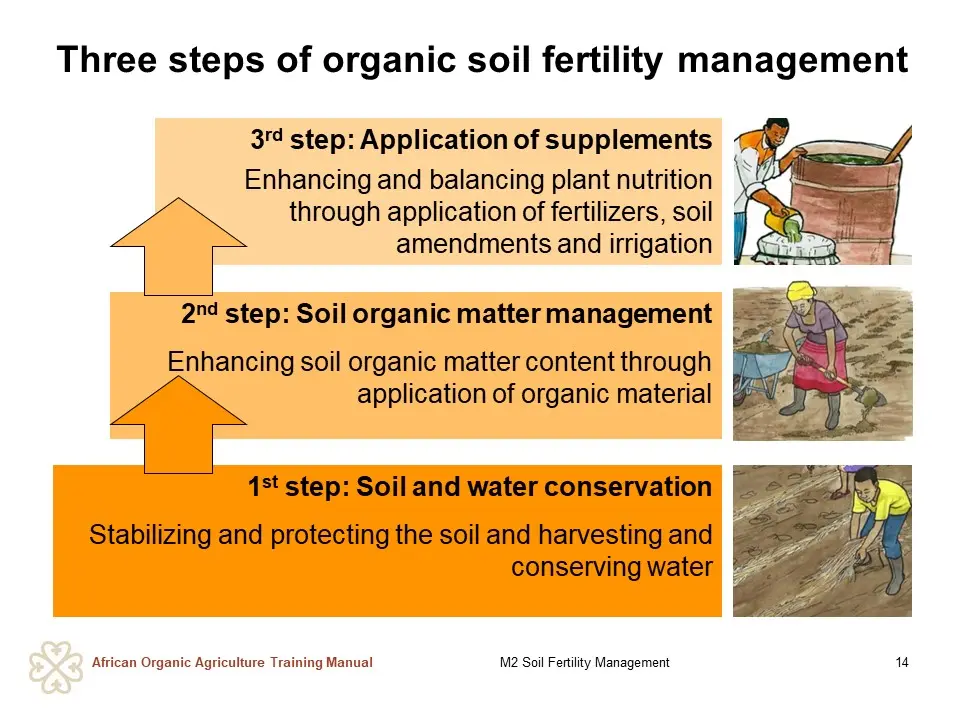
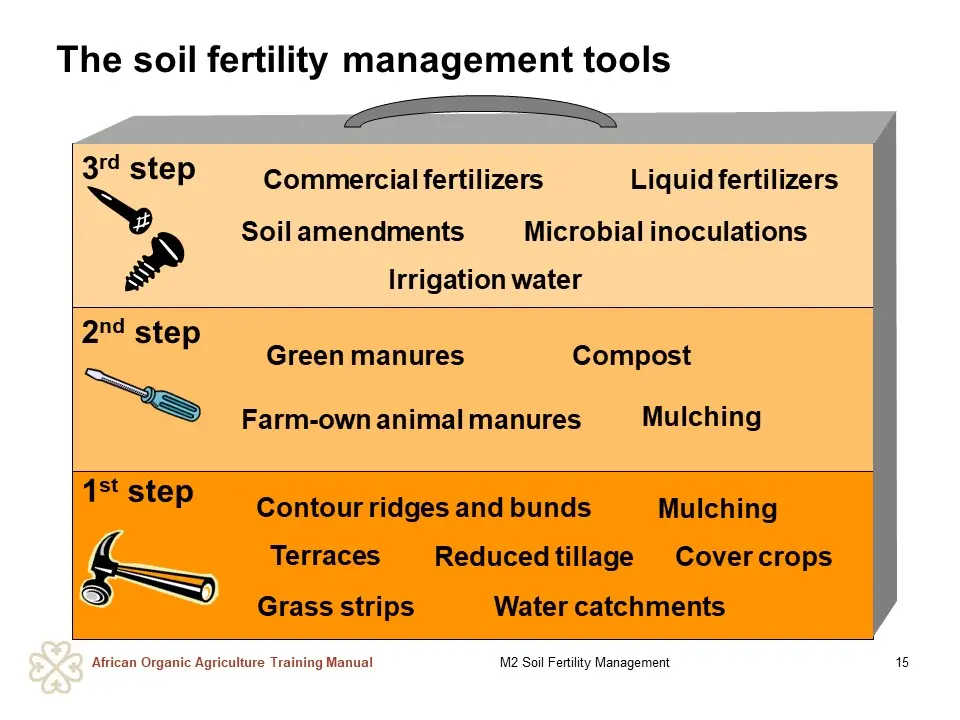
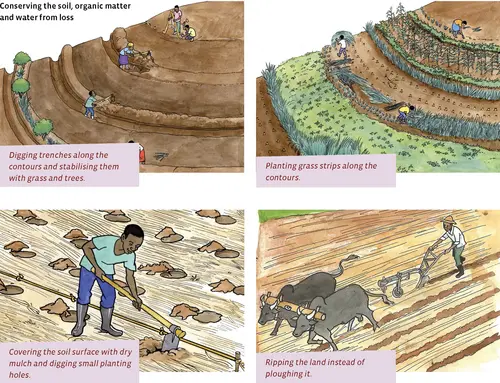
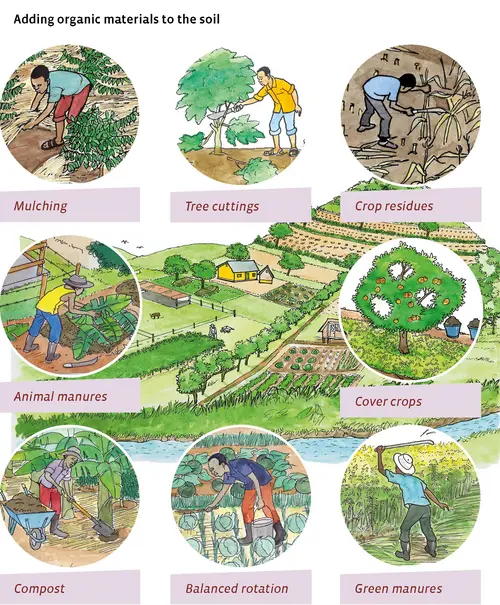
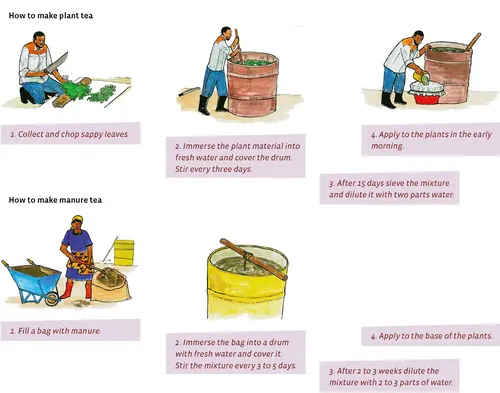
 tap and then scroll down to the Add to Home Screen command.
tap and then scroll down to the Add to Home Screen command.